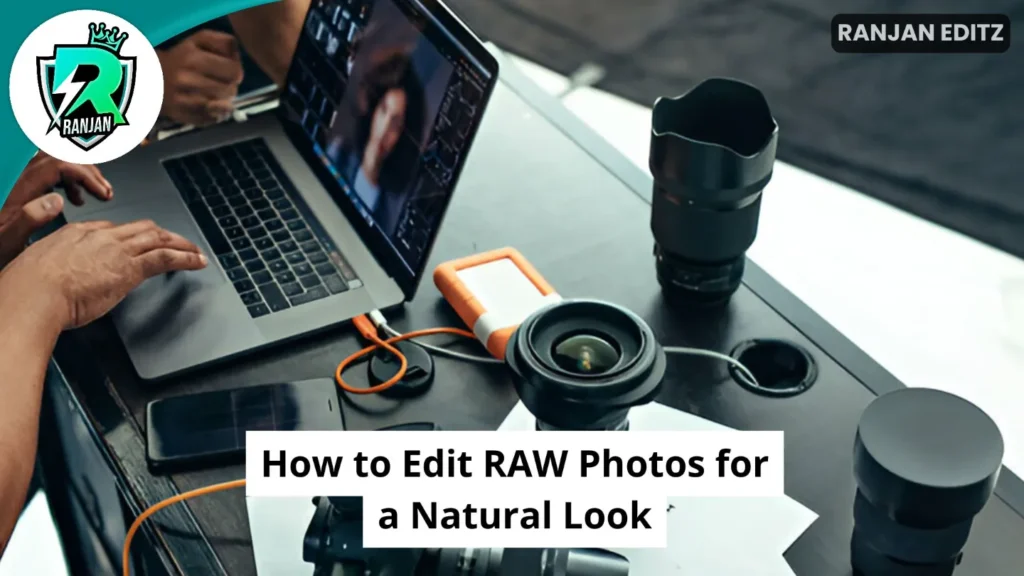Proficiency in editing RAW photos remains vital for photographers who plan to improve their images without artificial-looking changes. A major difference between JPEGs and RAW files exists because RAW files keep unprocessed data which enables advanced post-processing. The following article explains RAW photo editing techniques to achieve natural results through available software tools.
Table of Contents

Understanding RAW Files
Captainains must grasp RAW’s superiority to JPEG files before approaching photo editing work. One major advantage of RAW files lies in their ability to capture detailed information while also extending colour range capabilities along with their non-destructive editing capabilities. The process of achieving realistic results in RAW photo editing demands successful techniques for effective natural appearance.
Choosing the Right Software
Selecting software for RAW photo editing stands as the primary crucial move for every process. Adobe Lightroom represents one of several popular software options that also include Capture One and DxO PhotoLab. Through these programmes users gain access to advanced tools which enable exposure and white balance adjustments along with colour modifications without degrading picture quality.
Step-by-Step Guide on How to Edit RAW Photos for a Natural Look
1. White Balance must be adjusted correctly as the first step.
Thumbnail: White balance stands as the essential factor which brings out natural appearance in pictures. The colour tones in RAW files tend to display incorrectly and they appear insipid. Use your editing software’s temperature and tint sliders to fix the unnatural colour distortions present in the image. Once selecting a neutral grey section with the eyedropper tool in the image it will enable precise colour balancing.
2. Correct Exposure and Contrast
The adjustment of exposure enables you to recover important details in image highlights as well as shadows. Adapt exposure density with minor changes when your image needs exposure correction in either direction. The adjustment level for contrast needs to stay medium while you improve depth in the image because excessive alteration produces artificial effects.
3. Fine-Tune Highlights and Shadows
The process of achieving balanced imagery requires proper adjustment of highlight and shadow areas. The process of lowering highlights keeps details intact throughout high-light areas and simultaneously raising shadows brings back missing information from shadowed regions. The ability to retrieve details becomes essential in natural-looking RAW photo editing since it avoids excessive processing of images.
4. Adjust Colors with HSL Panel
Through the HSL (Hue, Saturation, and Luminance) panel users may make exact colour adjustments. When any colour looks excessively intense you should decrease its saturation values. You can refine colour appearance through minor modifications of their luminance values. Adjustments through this panel make colours look authentic instead of artificial.
5. Apply Selective Adjustments
The complete solution provided by global adjustments proves insufficient in certain cases. You can edit local areas using radial philtres together with graduated philtres and adjustment brushes. A graduated philtre lets users balance exposure when light intensity from the sky becomes excessive.
6. Sharpening and Noise Reduction
The process of sharpening reveals additional details yet any excessive implementation can produce artificial-like effects within the image. Users should employ sharpening with care to prevent unwanted halo effects from arising. You should apply noise reduction techniques specifically to areas that show grainy effects mainly in situations with reduced lighting.
7. Maintain a Consistent Editing Style
The essential principle for editing multiple images simultaneously becomes consistency. The creation of presets and the option to save custom settings will improve your editing process. Adjustment of each photo needs individual evaluation to preserve its natural look.
Common Mistakes to Avoid
The following errors should be avoided when learning to edit RAW photos for natural results:
- A high saturation level leads to photographs featuring unrealistic visual effects.
- Excessive application of sharpening philtres causes unnatural artefacts while damaging natural edge appearance.
- Raising contrast to its maximum levels leads to details disappearing from both dark and light regions of an image.
- Failure to adjust white balance leads to abnormal skin colours and unwanted colour alterations in images.

